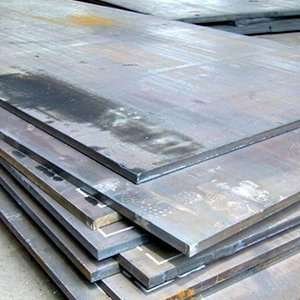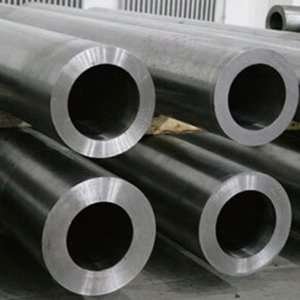Type 305 (UNS S30500/1.4303)
• Welding: This particular grade is regarded to have comparable weldability to its counterparts Types 304 and 304L by the common fusion and resistance technique. However, autogenously forms of welding in Type 305 are more sensitive to hot cracking than the other grades.
• Corrosion resistance: Similar to the Type 304, 305 stainless steel offers great protection from a large variety of solutions used in chemical, textile, petroleum, dairy, and food industries.
• Formability: Type 305 can easily be formed and deep drawn into complex shapes as a function of its lower strength and work hardening rate.
• Heat Treatment: This austenitic class of stainless steel is not known to be hardened by heat treatment. Annealing occurs at 1850 -2050 OF, then water can be added to quench or rapidly air cool.
Description
305 stainless steel is an austenitic chromium-nickel stainless steel grade, characterized by its low rate of work hardening. This makes it the best option for many deep drawing applications. To bring the rate of error during drawing, the directionality initiated during cold rolling must be kept to a minimum.
This stainless steel grade provides the user with safety and durability that is peculiar to the steel of its class. The obliteration of industrial chemical components doesn’t allow for it to harbor acids that can be found in your daily edibles.
The 305 stainless steel can be typically used for appliances, kitchen utensils, tank covers, and other deep-drawn parts. You practically need them for your daily running.
Common Names: Stainless steel 305
Executive Standards:
- UNS……………………… S30500
- ASTM……………………. A240
- AMS ……………………… 5514
- EN-DIN ………………….. 1.4303
Chemical Properties:
- Carbon ………………………………. 0.12 max.
- Sulfur ………………………………… 2.00 max.
- Phosphorus …………………………. 0.045 max.
- Manganese …………………………. 2.00 max.
- Silicon ………………………………… 0.075 max.
- Chromium …………………………… 17.0 – 19.0
- Nickel ………………………………… 10.5 -13.0
Mechanical Properties:
- Yield strength ……………………….. 30 min.
- Tensile Strength ……………………. 70 min.
- Elongation …………………………… 40 min.
- Hardness …………………………….. 88 min.
Physical Properties:
- Density ……………………………… 0.290 Ib
- Elasticity …………………………… 28.0 x106 psi
- Expansion ………………………….. 9.6 x 10-6 in tension
- Conductivity ………………………. 9.4 oF
- Heat …………………………………… 0.12 oF
- Electrical Resistance …………… 28.4 Microohm-in
Key Features:
305 grade stainless has similar corrosion resistance as 304 and has good oxidation resistance in the air up to 1650 F (899 C). 305 can be readily formed and deep drawn into complex shapes due to its lower strength and work hardening rate and will remain nonmagnetic after cold work unlike 301 or 304.
Product Forms Available: Sheet, coil-strip, foil, flat, square.
Applications: Eyelets, electronic enclosure applications, deep drawn, or spun components.
FAQs:
- What is the difference between 305 and 304 steel?
Type 305 stainless steel, is chromium-nickel stainless steel that can be deep drawn and cold-worked more readably than other austenitic steel grades. Also, due to increased nickel content, the work hardening rate is reduced.
- Does the 305 stainless steel rust?
305 grade stainless has similar corrosion resistance as the 304 and its oxidation resistance in the air is up to 1650 F (899 C). As a plus, 305 can be readily formed and deep drawn into complex shapes due to its lower strength and work hardening rate and will remain nonmagnetic after cold work unlike 301 or 304.
- Can the 305 Stainless steel be regarded as the best?
Definitely not, all steel products can be favored based on their use.
Get A Free Quote Now!







